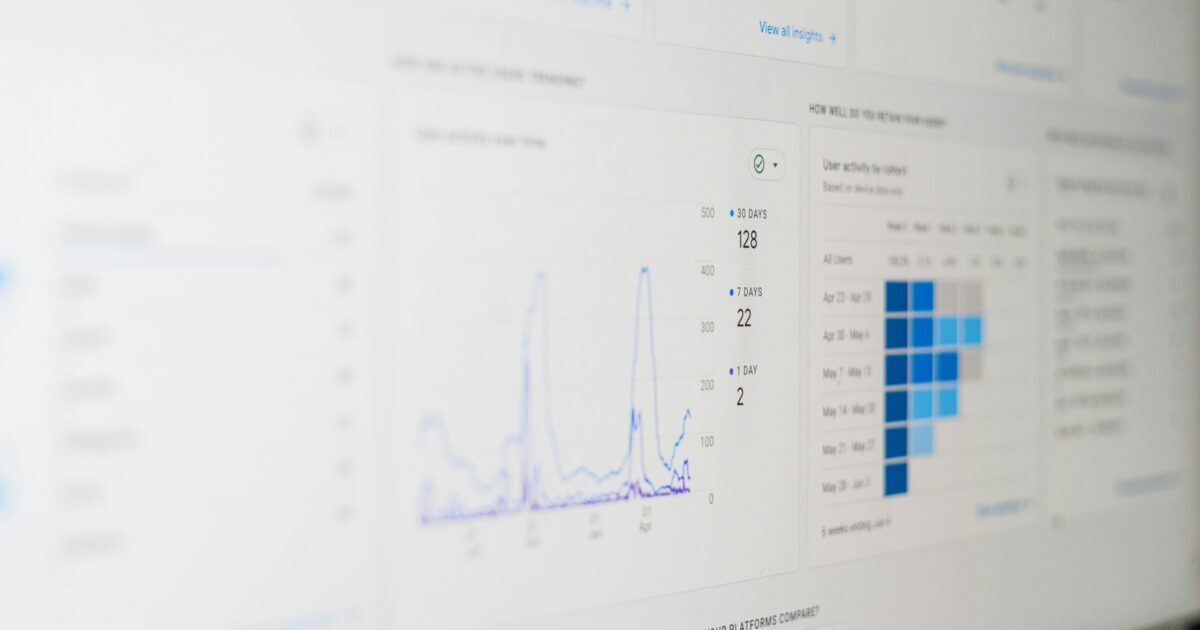
SEO Vs. SEM? Wait, There’s A Difference? Yep.
Welcome, digital enthusiasts! Today, we’re delving into the essential elements of digital marketing, SEO vs. SEM. These two acronyms might seem like alphabet soup, but they’re the backbone of your online success. Let’s break them down in simpler terms.
So, while SEO and SEM both aim to increase your website’s visibility and attract traffic, they do so through different means and timelines. SEO is like laying the groundwork for long-term success, while SEM provides a shortcut to immediate results through paid advertising.
By combining both strategies strategically, you can create a robust digital marketing strategy that maximizes your online presence and drives tangible results for your business.
What Is SEO?
First up, SEO, or Search Engine Optimization. It’s the art and science of making your website more visible to search engines like Google. Imagine SEO as the road signs that guide users to your digital doorstep. By optimizing your website’s content, structure, and performance, you increase your chances of ranking higher in search results. But it’s not just about cramming keywords into your content; it’s about providing value to your audience and earning their trust.
SEO is like planting seeds in a garden and patiently nurturing them until they bloom into beautiful flowers. It’s all about optimizing your website and content to rank higher in organic search engine results. SEO focuses on improving your website’s visibility and attracting organic (unpaid) traffic by aligning with search engine algorithms and user intent.
Long-Term Strategy
SEO is a marathon, not a sprint. It takes time to see results, but the payoff can be huge in the long run.
Organic Traffic
With SEO, you’re attracting visitors who are actively searching for information related to your business or industry.
Content-Centric
SEO relies heavily on creating high-quality, relevant content that resonates with your audience and addresses their needs and queries.
Factors Include
On-page optimization, off-page optimization, technical SEO, user experience, and content quality.
What Is SEM?
Now, onto SEM, or Search Engine Marketing. Unlike SEO, which focuses on organic methods, SEM involves paid advertising to boost your visibility on search engine results pages. It’s like renting billboard space on the digital highway. With SEM, you bid on keywords relevant to your business and create compelling ads that appear alongside search results. It’s a way to jumpstart your visibility and drive targeted traffic to your website.
SEM, on the other hand, is like waving a magic wand and instantly appearing at the top of search results. It involves using paid advertising to promote your website and attract targeted traffic. With SEM, you bid on keywords and pay for your ads to appear at the top of search engine results pages (SERPs) or on other websites across the internet.
Immediate Results
Unlike SEO, which takes time to gain traction, SEM provides instant visibility and traffic to your website.
Paid Traffic
With SEM, you’re paying for each click on your ads, making it a more immediate but also potentially more costly strategy.
Keyword-Focused
SEM revolves around targeting specific keywords and crafting compelling ads that encourage users to click and visit your website.
Factors Include
Pay-per-click (PPC) advertising, display advertising, remarketing, shopping ads, video advertising, and social media advertising.
Types Of SEO
When it comes to SEO, it’s not a one-size-fits-all approach. Just like spices in a well-stocked kitchen, there are different types of SEO techniques, each adding its unique flavor to your digital strategy. Let’s break them down:
On-Page SEO
Think of this as the bread and butter of SEO. On-page SEO involves optimizing individual pages on your website to improve their visibility in search engine results. This includes optimizing meta tags (title tags, meta descriptions), using relevant keywords in your content, optimizing headers and subheadings, improving page load speed, and ensuring mobile-friendliness. Essentially, it’s about making your website as search engine-friendly as possible.
Off-Page SEO
While on-page SEO focuses on optimizing your website itself, off-page SEO is all about building your website’s authority and credibility through external factors. This includes earning backlinks from reputable websites, social media engagement, influencer outreach, and online reputation management. Off-page SEO signals to search engines that your website is trustworthy and authoritative, which can boost your rankings in search results.
Technical SEO
This is the nitty-gritty stuff that often goes unnoticed but is crucial for search engine visibility. Technical SEO involves optimizing the technical aspects of your website to ensure that search engines can crawl, index, and understand your content efficiently. This includes optimizing site structure, improving site speed, fixing broken links, implementing schema markup, and optimizing URL structure. Technical SEO lays the foundation for a well-optimized website and can have a significant impact on your search rankings.
Local SEO
If you’re running a brick-and-mortar business or targeting a specific geographic area, local SEO is your best friend. Local SEO focuses on optimizing your website to appear in local search results, such as Google Maps and local listings. This includes creating a Google My Business profile, optimizing local keywords, obtaining local citations, and encouraging customer reviews. Local SEO helps you connect with customers in your area and drive foot traffic to your physical location.
Voice Search SEO
With the rise of virtual assistants like Siri, Alexa, and Google Assistant, voice search SEO is becoming increasingly important. Voice search SEO involves optimizing your website for natural language queries that users might speak into their devices. This includes using conversational keywords, answering common questions directly in your content, and optimizing for featured snippets. Voice search SEO ensures that your website remains relevant in the age of voice-activated search.
E-commerce SEO
If you’re running an online store, e-commerce SEO is your ticket to success. E-commerce SEO involves optimizing your product pages, category pages, and other elements of your online store to improve visibility in search results and drive sales. This includes optimizing product titles and descriptions, implementing schema markup for product information, optimizing product images, and improving site navigation and user experience. E-commerce SEO helps you stand out in a crowded online marketplace and attract more customers to your store.
These are just a few of the many flavors of SEO available to spice up your digital strategy. By combining different types of SEO techniques and tailoring them to your specific goals and target audience, you can improve your website’s visibility, attract more traffic, and ultimately grow your business.
Related: Check out Mediacize’s SEO services.
Types Of SEM Campaigns
When it comes to Search Engine Marketing (SEM), it’s all about leveraging paid advertising to boost your visibility and drive targeted traffic to your website. Just like SEO, SEM comes in various flavors, each with its unique benefits and strategies. Let’s explore the different types of SEM:
Pay-Per-Click (PPC) Advertising
PPC is the bread and butter of SEM. With PPC advertising, you bid on keywords relevant to your business, and your ads appear at the top of search engine results pages (SERPs) when users search for those keywords. You only pay when someone clicks on your ad, making it a cost-effective way to drive targeted traffic to your website. Google Ads (formerly known as Google AdWords) is the most popular platform for PPC advertising, but there are also options like Bing Ads and social media PPC ads.
Display Advertising
Ever visited a website and seen ads for products or services you recently searched for? That’s display advertising in action. Display ads are visual ads that appear on websites across the internet, targeting users based on their interests, demographics, and browsing behavior. Display advertising allows you to reach a broader audience beyond search engine results pages, increasing brand awareness and driving traffic to your website.
Remarketing
Have you ever visited a website, only to see ads for that website follow you around the internet? That’s remarketing in action. Remarketing, also known as retargeting, allows you to target users who have previously visited your website or interacted with your brand but haven’t converted yet. By showing them targeted ads as they browse other websites or social media platforms, you can reengage them and encourage them to complete a purchase or take another desired action.
Shopping Ads
If you’re running an e-commerce business, shopping ads are your best friend. Shopping ads, also known as Product Listing Ads (PLAs), allow you to showcase your products directly within search engine results pages. These ads include product images, prices, and other relevant information, making them highly visual and engaging. Shopping ads are a powerful way to attract users who are actively searching for products to purchase and drive qualified traffic to your online store.
Video Advertising
In today’s digital landscape, video is king. Video advertising allows you to reach your audience with engaging video content across various platforms, including YouTube, social media, and websites within Google’s Display Network. Whether it’s in-stream ads that play before or during YouTube videos, or display ads on other video-sharing platforms, video advertising allows you to tell your brand’s story in a captivating and memorable way.
Social Media Advertising
Last but not least, social media advertising is a crucial component of SEM. Platforms like Facebook, Instagram, Twitter, LinkedIn, and Pinterest offer robust advertising options that allow you to target users based on their interests, demographics, and behavior. Whether you’re looking to increase brand awareness, drive website traffic, or generate leads, social media advertising provides a powerful way to reach your audience where they spend their time online.
These are just a few of the many flavors of SEM available to spice up your digital marketing strategy. By combining different types of SEM techniques and platforms and tailoring them to your specific goals and target audience, you can increase your visibility, drive targeted traffic, and ultimately grow your business.
Related: Get started with your own PPC campaign today.
SEO Vs. SEM: How Do Both Work Together?
But here’s the kicker: both SEO and SEM are essential components of a well-rounded digital marketing strategy. While SEO lays the foundation for long-term success, SEM provides immediate results and complements your organic efforts. Together, they form a powerful duo that can propel your business to new heights online.
Understanding Search Behaviors
So, how do you harness the power of SEO and SEM for your own digital endeavors? It starts with understanding your audience and their search behavior. What are they looking for? What keywords are they using? By conducting thorough keyword research, you can identify opportunities to optimize your content and target your SEM campaigns effectively.
Creating High-Quality Content
Next, it’s all about creating high-quality content that resonates with your audience. Whether it’s informative blog posts, engaging videos, or eye-catching infographics, content is king in the digital realm. By providing value to your audience, you not only improve your chances of ranking higher in search results but also increase the likelihood of converting visitors into customers.
Optimizing Technicalities
And let’s not forget about the technical side of things. From optimizing your website’s loading speed to ensuring mobile-friendliness, there are countless factors that can impact your search rankings. By keeping your website in tip-top shape, you create a seamless user experience that search engines love.
Becoming An Analytics Genius
Finally, don’t underestimate the power of analytics. Whether you’re tracking website traffic, monitoring ad performance, or measuring conversion rates, data is your best friend in the world of digital marketing. By analyzing key metrics, you can identify what’s working, what’s not, and make informed decisions to optimize your strategy moving forward.
What Will You Choose?
In conclusion, SEO and SEM are the dynamic duo of digital marketing, each playing a vital role in your online success. By combining organic efforts with paid advertising, you can increase your visibility, attract more traffic, and ultimately grow your business. So, embrace the power of SEO and SEM, and watch your digital presence soar.





